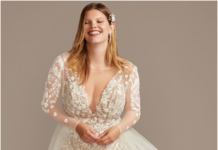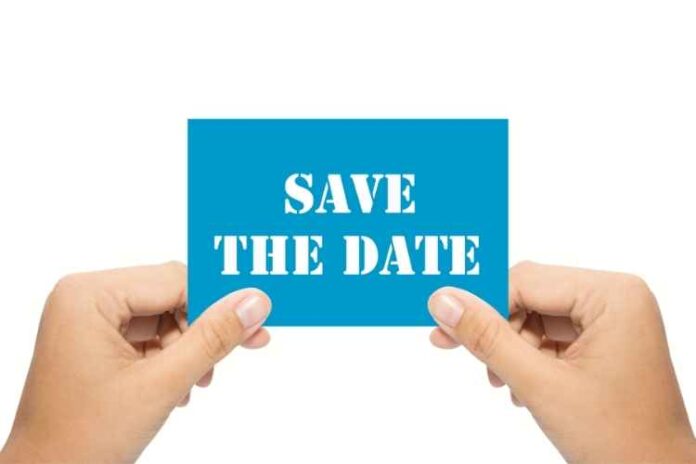When you’re deeply in love and planning to get wed, you’ll undoubtedly want to share your good news with family and friends as soon as possible. Letting everyone know about your wedding well in advance, via stylish and personalised save the dates, is a fashionable and excellent way to prompt your guests to pencil in the special day on their calendar or in their diary.
Save the date cards are a valuable and practical piece of wedding stationery that helps your guests plan ahead for your wedding day. Following wedding etiquette rules will help you stay on track with the myriad of important wedding planning tasks, so that you can enjoy the best day of your life.
When To Write:
As soon as you and your partner have agreed on a style and design for your pre-wedding invite cards and they have been printed and delivered to you, you can go ahead and write them. Provided that you have already worked out your budget for the wedding and venue. It’s best to know how much money you have to spend before you go ahead and notify guests.
As the cards are designed to let VIP guests know that you want them to circle a specific date on their calendar, you don’t have to worry about penning a personalised message. If you’re a little unsure about whether or not to invite someone to your wedding, it’s best not to add their name to your VIP list. You can always send them an official wedding invite, if you change your mind later on.
Some couples choose to send save the date cards to their VIP (family and close friend) guests only. Others mail the cards to the guests that live out of town, in order to save on the wedding budget spend. Who you send your cards to is entirely up to you and your future spouse.
What To Include:
There are a few obvious things that you need to include in your save the dates…
Write or print your maiden names in a stylish font that really stands out on the premium quality card. Avoid using titles like “the soon-to-be Mr and Mrs” to ensure that guests can clearly see and understand who is getting married. To make it even easier for them, you can also add a photo of you and your partner looking suitably loved-up.
There is obviously only one date that you need to include on the cards – add the date that you and your beloved have chosen to get hitched. If you’re planning extended wedding celebrations over the course of a long weekend, it’s best to highlight the date of the wedding ceremony.
Although you don’t have to provide details of the wedding ceremony and reception venue (as this information is featured on the official wedding invitation), it’s helpful to give your guests an idea of the general location. Include the name of the city, town, or village, and the country that you’re getting married in. Letting family and friends know where the happy event is taking place allows them to work out travel logistics.
If you’re planning a destination wedding, your guests will need to book flights and accommodation well in advance. Notifying them know of your wedding plans as soon as possible means that they can book ahead of time and potentially save money.
Although your guests will be excited to receive news of your plans to tie the knot, they are not officially invited to your wedding until they receive a formal personalised wedding invitation. You can however, let them know that they can look forward to getting a wedding invite in the post in due course. The follow-on wedding invitations should be sent to guests 2-3 months before your wedding day.
Add A Wedding Website Link
If you have a personalised wedding website, add a link to it in your pre-wedding invitations. Before you mail out the invites, it’s essential that the website is live. If you have a technical hitch and your wedding website isn’t ready to view just yet, it’s acceptable to include the link with a note to remind guests to check the information at a later date.
When To Send:
Wedding etiquette recommends that couples send their save the dates to guests 6 to 8 months prior to the wedding day. It’s also acceptable to send them out sooner than that, if you’re a super organised wedding planner. But sending the cards out far too soon (a year in advance) can result in you having to send out reminders, as guests often put off making plans early and later forget!
If you’re slack about writing and sending the pre-wedding invites, you potentially run the risk of some guests not being able to join you in celebrating your big day, because they have made other social plans.
To ensure that you personalised cards arrive in a timely fashion, make sure that each envelope is correctly and clearly addressed, It’s a good idea to check for outdated addresses before you begin writing out the personalised pre-wedding invites.
Choose The Correct Postage
Finally, make sure that you add the correct amount of postage. It’s not a good idea to guess at the postage cost and to stick random stamps on your beautiful bespoke cards before shoving them inside a postbox. Pay a visit to your local post office and have the cards weighed. Hand them over for mailing from the post office, so that the envelopes avoid cramped postbox damage.






















